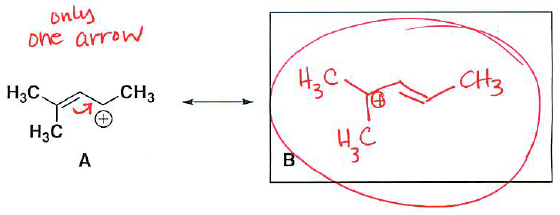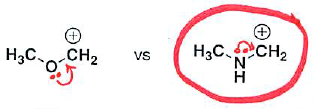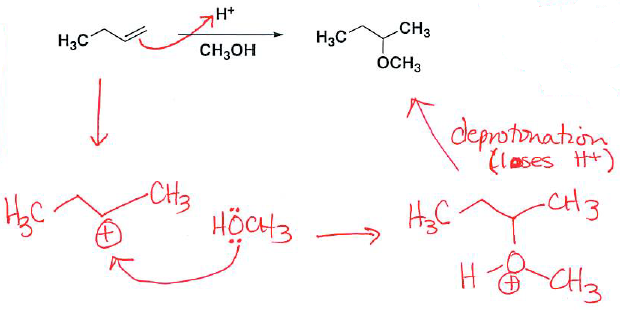3.26: Quiz 5A Key
- Page ID
- 19326
- Clearly indicate true (T) or false (F) for the following statements (2 pts each):
| __F__ | Increasing the energy of activation will increase the rate of the reaction. |
| __F__ | Transition states are high energy species that have fully formed bonds. |
| __T__ | A catalyst can increase the rate of a reaction. |
- Multiple Choice: (2 pts each)
- Which of the following reagents gives the hydrogenation reaction shown below.

 HCl
HCl- H2 with H2O
- H2 with a palladium catalyst
- H2O with palladium catalyst
- Consider the reaction coordinate diagram below to answer the following questions:
- Which of the following reagents gives the hydrogenation reaction shown below.
 | How many intermediates are present in the following reaction diagram? 2 How many transition states are present in the following reaction diagram? 3 Which is more stable, reactants or products? products |
- (5 pts) Draw a resonance contributor for the following compound. Show curved arrows to represent the electron movement and include any necessary formal charges. Indicate (circle) which structure is a great contributor to the resonance hybrid.

(See page 147)
Major contributor because positive charge is on tertiary carbon
- (8 pts) Identify (label) the nucleophile and electrophile in each of the following reaction steps. Then draw the curved arrows to the show the flow of electrons and give the structure (intermediate or product) that would result.

- (10 pts) Indicate (circle) which of the carbocations in the following pair is more stable and briefly explain your answer.
-
Both carbocations are stabilized by resonance delocalization of the π-electrons. But carbocation B is a secondary carbocation while carbocation A is a primary carbocation. The secondary carbocation is more stabilized because the carbon atom is more e-donating than just a hydrogen.
(See Question 6a from Chapter 6)
-

Both the oxygen and the nitrogen can donate electrons to stabilize the carbocation. But nitrogen is better at donating electron density because it is less electronegative and does not hold onto its electrons as tightly as oxygen.
(Oxygen is more electronegative, so the electron density is less available. This is also why N is more nucleophilic than O.)
(Question 34a from Chapter 6)
-
-
- (3 pts) What carbon building block can be used to synthesize the following product?

- (2 pts) What carbon building block does nature use to synthesize the following product(s)?

Carbon dioxide in the air is used for photosynthesis.
- Extra Practice (5 pts):
Draw a curved arrow mechanism for the acid-catalyzed addition of an alcohol to an alkene.

(Mechanisms require you to show the intermediates.)

